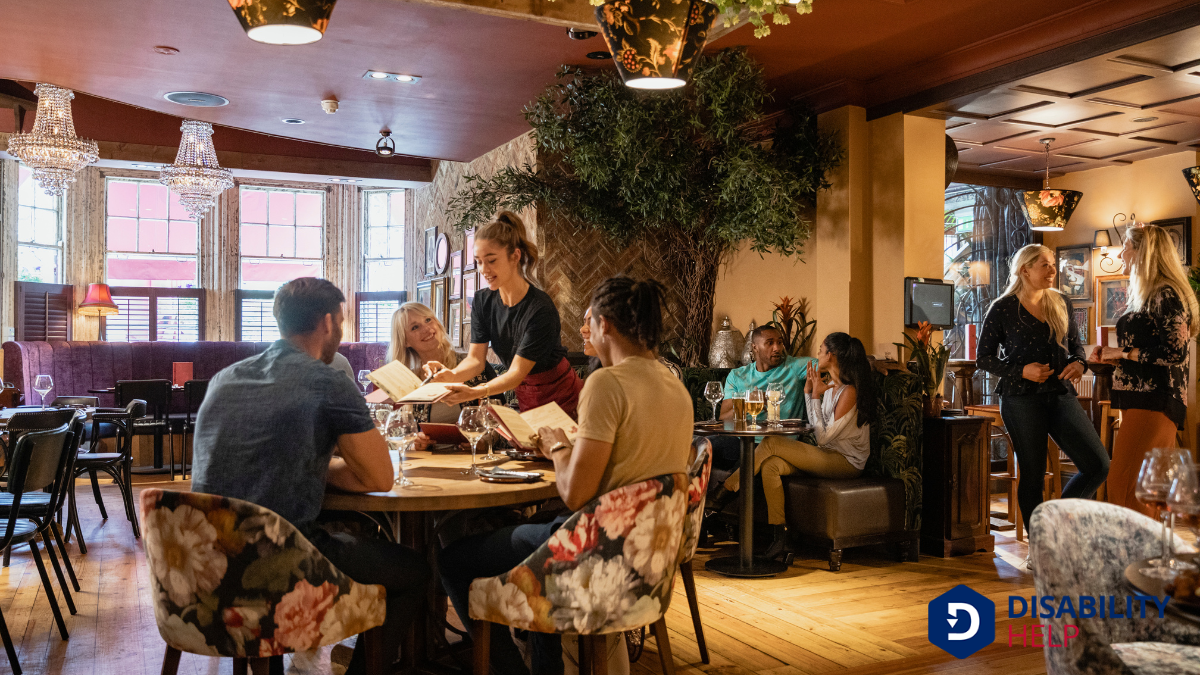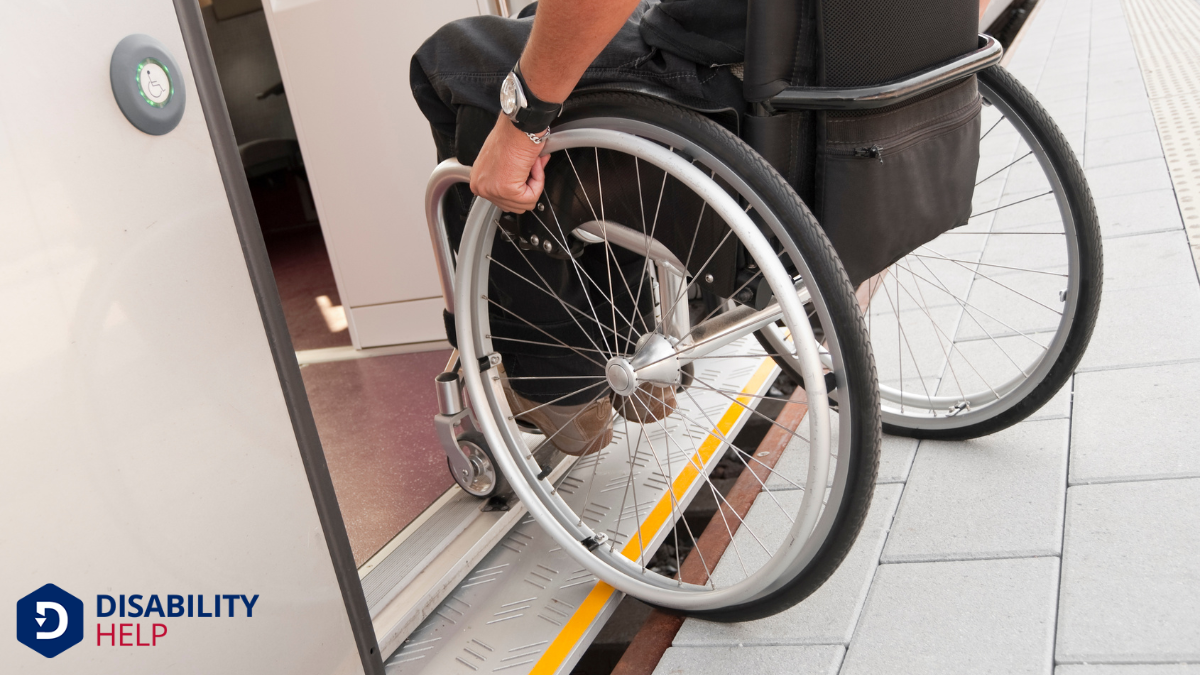We often wonder if restaurants can truly be held accountable for not being accessible to everyone. With the Americans with Disabilities Act setting clear guidelines, it seems straightforward. Yet, the reality is complex, involving legal, ethical, and practical challenges. How do these establishments balance compliance with creating a genuinely inclusive atmosphere? Let's explore the nuances and discover where accountability lies in the dining industry.
Key Takeaways
- Restaurants can be held accountable under the ADA for failing to provide accessible public accommodationsModifications or adjustments in healthcare settings to support patients with disabilities..
- ADA compliance checks assess whether restaurants have removed accessibilityThe design of products, devices, services, or environments to be usable by people with disabilities.... barriers such as ramps and accessible restrooms.
- Non-compliance with ADA standards can result in potential lawsuits against the restaurant.
- Legal accountability encourages restaurants to make necessary renovations despite financial or structural challenges.
- Restaurants must prioritize accessibility to avoid legal consequences and ensure inclusivity for all diners.
Understanding the Legal Framework for Accessibility
When we explore the legal framework for accessibility in restaurants, it's vital to recognize the impact of key legislation like the Americans with Disabilities Act (ADA)A U.S. law that prohibits discrimination against individuals with disabilities in all areas of publi....
The ADA, enacted in 1990, guarantees that individuals with disabilities have equal accessThe principle that all individuals, including those with disabilities, should have equal opportunity... to public accommodations, including restaurants. We see this legislation requires restaurants to remove barriers that hinder accessibility, providing ramps, accessible restrooms, and wide doorways.
It’s essential for us, as patrons and business owners, to understand these requirements and guarantee compliance to avoid legal consequences.
Restaurants are held accountable through ADA compliance checks and potential lawsuits if they fail to meet standards.
The Ethical Imperative for Inclusive Dining

While legal frameworks like the ADA mandate accessibility, our commitment to inclusive dining goes beyond mere compliance.
We believe every diner deserves the opportunity to enjoy a meal without barriers. It's not just about ticking boxes on a checklist; it's about respecting dignity and fostering community.
We need to ask ourselves: Are we creating spaces where everyone feels welcome?
Challenges Faced by Restaurants in Achieving Accessibility
Despite our best intentions, achieving true accessibility in restaurants presents several challenges that can't be ignored.
First, older buildings often face structural limitations, making renovations costly and complicated. It’s not just about installing ramps or wider doorways; we must consider bathrooms, seating arrangements, and kitchen layouts too. Financial constraints can discourage small businesses from making necessary changes, especially when budgets are tight.
Moreover, understanding the diverse needs of people with disabilities can be complex. We need to balance visual, auditory, and mobility considerations, all while maintaining an inviting atmosphere.
Staff training is another critical aspect. Employees must know how to assist patrons appropriately, which requires time and resources. These hurdles shouldn’t deter us, but they do require thoughtful planning and commitment.
Success Stories: Restaurants Leading the Way in Inclusivity
Overcoming the challenges of accessibility in the restaurant industry isn't just possible; some establishments are setting inspiring examples.
These trailblazers prioritize inclusivity, ensuring every guest feels welcome and valued. For instance, a popular café chain has redesigned its spaces, incorporating wider aisles and accessible restrooms, making visits comfortable for everyone.
Another inspiring story comes from a family-owned bistro that offers menus in Braille and hires staff fluent in sign language, enhancing the dining experience for visually and hearing-impaired patrons.
They consistently seek feedback from customers with disabilities, driving further improvements.
Practical Steps for Improving Restaurant Accessibility

Improving restaurant accessibility doesn't have to be overwhelming; small, deliberate changes can make a significant difference.
Let's start with entryways. Installing ramps and automatic doors guarantees everyone can enter with ease.
Inside, we can rearrange seating to allow for wider aisles, making navigation simpler for wheelchairs and walkers. It’s also essential to have accessible restrooms with grab barsBars installed in bathrooms or other areas to provide support and prevent falls for those with mobil... and enough space for mobility aidsDevices designed to help individuals move around more easily, such as canes, walkers, or wheelchairs....
Menus should be available in large print and Braille. If we train our staff to assist guests with diverse needs, we can enhance their experience.
Additionally, incorporating visual and auditory cues can aid those with sensory impairments. By taking these steps, we make certain our restaurant is welcoming to all guests, creating a more inclusive dining environment.
Frequently Asked Questions
What Are the Common Misconceptions About Restaurant Accessibility?
We often think wider doorways and ramps cover all accessibility needs, but they don't. Accessibility includes clear pathways, readable menus, and accommodating service. Let's remember, true accessibility means everyone can enjoy dining without barriers or frustrations.
How Can Patrons Report Inaccessible Restaurants?
We can report inaccessible restaurants by contacting local authorities, disability rightsThe legal and human rights afforded to individuals with disabilities, often the focus of advocacy an... organizations, or using online platforms like Yelp. Let's document the issues clearly, providing photos if possible, to guarantee our concerns are taken seriously and improvements are made.
Are There Tax Incentives for Improving Restaurant Accessibility?
We can indeed explore tax incentives for improving restaurant accessibility. The IRS offers deductions and credits for businesses making accessibility upgrades. Let's guarantee our favorite dining spots take advantage and create inclusive spaces for everyone.
What Role Do Restaurant Reviews Play in Highlighting Accessibility Issues?
Restaurant reviews play an essential role in highlighting accessibility issues. As reviewers, we bring attention to barriers, encouraging owners to improve. Let’s guarantee everyone's dining experience is enjoyable by sharing our insights and advocating for change.
How Can Technology Aid in Restaurant Accessibility Improvements?
We can leverage technology to enhance restaurant accessibility. Apps provide real-time data on accessibility features, and digital maps guide us to accessible locations. Let's embrace these tools to guarantee everyone enjoys dining experiences without barriers.
Conclusion
In our journey toward inclusivity, we can't overlook the importance of making restaurants accessible to everyone. We've explored the legal and ethical imperatives, and we've seen inspiring examples of restaurants leading the way. While challenges exist, it's our collective responsibility to guarantee all diners feel welcome and respected. Let's commit to taking actionable steps, because when we create accessible spaces, we're not just following laws—we're building a community that values every individual.






